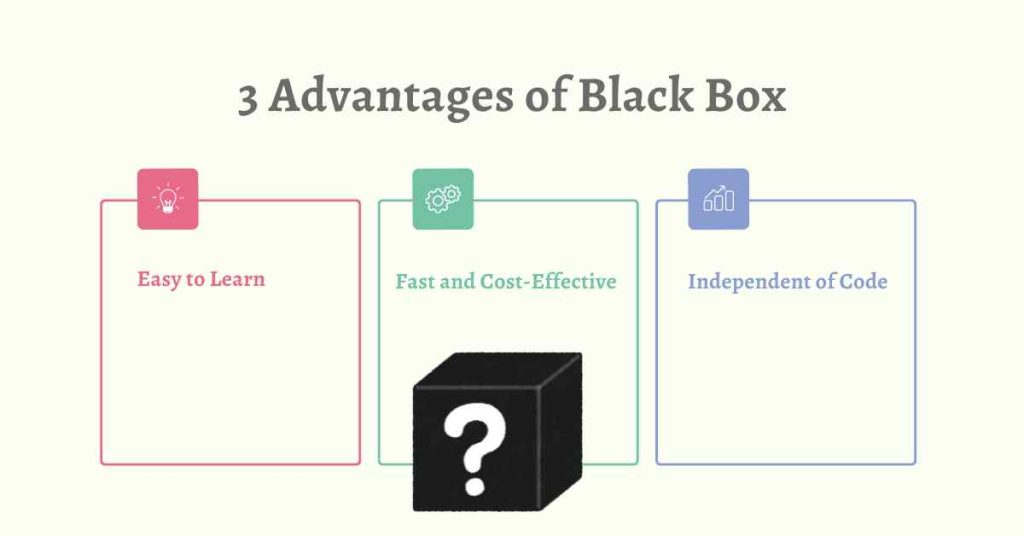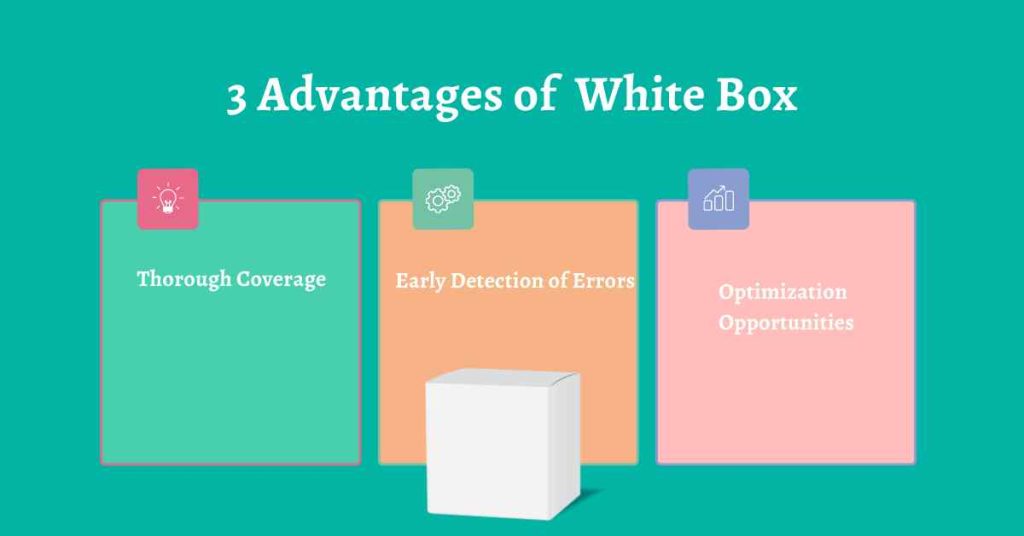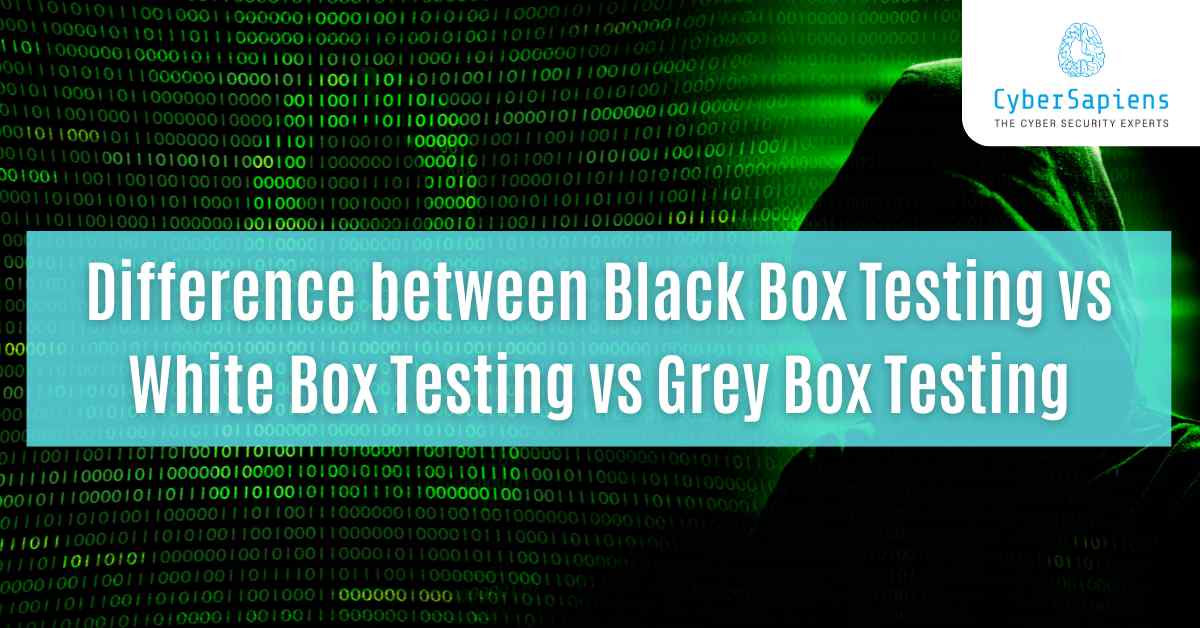Among the various methodologies that are employed in the field of software testing, the following approaches are widely used by testers to identify the defects in a software system. Out of the mentioned approaches, Black Box Testing, White Box Testing, and Grey Box Testing are the most common and used frequently.
Despite the similarities between the two approaches, there are also differences which include the strengths, the weaknesses, and the areas of its application.
In this article let’s discuss the Difference between Black Box Testing vs White Box Testing vs Grey Box Testing | Full Guide by knowing their methodology, Advantages and disadvantages
So why late let’s delve into the topic:
What is meant by Black Box Testing?

Black Box Testing or Behavioural Testing is one of the approaches to Software Testing where the agreement is signed and the internal structure of the system is not known. In other words, testers view the software from the black box perspective which means testing the software based on inputs and outputs.
This approach is used to check whether all the functionalities of the software system are correctly developed and whether the system is giving the expected output for the given inputs.
1. Methodology
In Black Box Testing, the test is prepared based on input given by the developer which are requirements and specifications of the system. They provide inputs and verify the system’s output to the desired one. This approach is mainly based on the behavioural aspect of the software concerning the intended task without necessarily having to examine the code structure.
2. Advantages

1. Easy to Learn
Black box testing is also easy and does not require the tester to have the knowledge of languages used in the code as well as its structure.
2. Fast and Cost-Effective
Testing is faster and it is also relatively easy to design test cases hence this is a cheaper way of testing as compared to other approaches.
3. Independent of Code
Since the testers do not need the code, this is a rather efficient way of testing third-party programs or applications that were developed a while ago.
3. Disadvantages
1. Limited Coverage
Black Box testing cannot be able to test all conditions because it only tests on the input and output.

2. Difficult to Identify Errors
Debugging is challenging mostly because the testers are not privy to the source code of the program being tested.
What is White Box Testing?

White Box Testing, also known as Glass Box Testing or Clear Box Testing, is a software testing technique that focuses on the examination of the internal workings of a program.
In this approach, the testers have a full understanding of the code structure, algorithms, and implementation. White Box Testing is the technique of testing the individual elements of a software system, which aims to check that a given element meets the expected requirements.
1. Methodology
White Box Testing techniques including statement coverage, decision coverage, and condition coverage are used by testers to test the internal structure of the software. They develop test cases from the code structure, that at least every line of the code is tested once.
2. Advantages

1. Thorough Coverage
White Box Testing ensures that each component of the software is thoroughly tested, thereby minimizing the possibility of errors.
2. Early Detection of Errors
Errors can be detected early, reducing the overall cost of fixing them.
3. Optimization Opportunities
This can help testers to identify some areas that can be made more efficient which will increase performance.
3. Disadvantages
1. Requires Programming Knowledge
This technique of White Box Testing demands technical skills in programming and for this reason, it may not be suitable for non-technical testers.
2. Time-Consuming and Expensive
Test cases and testing the internal logic of the software take a lot of time and resources to develop.
3. Over-Engineering
Testers can exaggerate the testing process and this makes the process more complicated than it is.
What is Grey Box Testing?

Grey Box Testing is a software testing technique that is a combination of Black Box Testing and White Box Testing. In this method, testers have some knowledge of the software but not as much as they would have in White Box Testing. Grey box testing is used to test the functionality of the software and its internal structure to some extent but not as much as in white box testing.
1. Methodology
In Grey Box Testing, test cases are developed by the testers with the help of Software requirements and specifications like Black Box Testing. But, they also possess some insights about the internal structure, for instance, the algorithms and data structures employed. This in turn enables the testers to come up with better test scenarios that include both the functional as well as the non-functional aspects of the software.
2. Advantages

1. Balanced Approach
Grey Box Testing is a two-way approach that contains the merits of both Black Box Testing and White Box Testing.
2. Improved Coverage
It is always easier to create more specific test cases that can help increase the overall coverage of the software being tested.
3. Cost-Effective
Grey Box Testing is cheaper than White Box Testing while at the same time giving better coverage than Black Box Testing.
3. Disadvantages
1. Requires Some Programming Knowledge
Testers must know some programming languages and the code of the tested software.
2. May Not Cover All Scenarios
Grey Box Testing, for instance, may not be able to cover all the possible conditions since it is a combination of Black Box and White Box Testing.
Comparison of Black Box vs White Box vs Grey Box Testing
Now let’s make it easier way to understand, follow the below table which gives you a clear understanding of the topic:
| Testing Technique | Approach | Knowledge of Internal Code | Advantages | Disadvantages |
| Black Box Testing | Functional | No | Easy to learn, fast and cost-effective, independent of code | Limited coverage, difficult to identify errors |
| White Box Testing | Structural | Yes | Thorough coverage, early detection of errors, optimization opportunities | Requires programming knowledge, time-consuming and expensive, over-engineering |
| Grey Box Testing | Balanced | Limited | Balanced approach, improved coverage, cost-effective | Requires some programming knowledge, may not cover all scenarios |
When to Use Each Technique?
1. Black Box Testing
Use when testing for the functionality of certain software, or when testing a third-party software or legacy software.
2. White Box Testing
Apply when unit checking various parts of a software package, or when diagnosing and rectifying faults in the code.
3. Grey Box Testing
For testing purposes in the functionality and internals of the software, but not as much as in White Box Testing.
Conclusion
We hope after reading the blog you were able to get a much clearer understanding that Black box testing, White box testing, and Grey box testing are three different testing methodologies with their merits and demerits. Thus, distinguishing between the three approaches will help testers select the most effective method to achieve the required objectives of software testing.
FAQs: Difference between Black Box Testing vs White Box Testing vs Grey Box Testing
1. What is the difference between Black Box Testing and White Box Testing?
Ans: Black Box Testing treats the software as a “black box” and focuses on functionality from the user’s perspective. White Box Testing delves into the internal code structure to test logic and specific code paths.
2. Which testing approach is better: Black Box or White Box?
Ans: There’s no single “better” option. Black Box Testing excels at user experience and usability, while White Box Testing ensures code logic and security. The ideal approach depends on the software and testing goals.
3. What are the benefits of Black Box Testing?
Ans: Black Box Testing provides a user-centric view, helps identify usability issues, and is efficient for regression testing.
4. What are the limitations of Black Box Testing?
Ans: Black Box Testing might miss internal logic errors and can be time-consuming for complex systems.
5. Who typically performs Black Box Testing?
Ans: QA testers or even end users can conduct Black Box Testing as it doesn’t require in-depth coding knowledge.
6. What are the advantages of White Box Testing?
Ans: White Box Testing offers thorough code coverage, helps detect logic errors, and is crucial for security testing.
7. What are the drawbacks of White Box Testing?
Ans: White Box Testing can be very time-consuming, might overlook user experience, and requires strong programming expertise.
8. Who typically performs White Box Testing?
Ans: Software developers usually conduct White Box Testing during the development process.
9. What is Grey Box Testing and how does it work?
Ans: Grey Box Testing combines aspects of Black Box and White Box Testing. The tester has some knowledge of the internal structure, but not the intricate details.
10. When is Grey Box Testing most useful?
Ans: Grey Box Testing is beneficial for API testing, database testing, and performance testing where a basic understanding of the system’s architecture is valuable.












